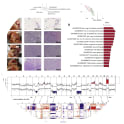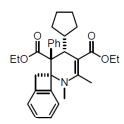7143 Reagents
HGS4 cell line
Invented at Queen Mary University of London
Isobenzofuran analog of sclerophytin A (6g) small molecule
Invented by Dr. Matt McIntosh at University of Arkansas, Fayetteville
tdTomato-pBAD vector
Invented at Florida State University
mPA-GFP-MCHR1-N-10 vector
Invented at Florida State University










